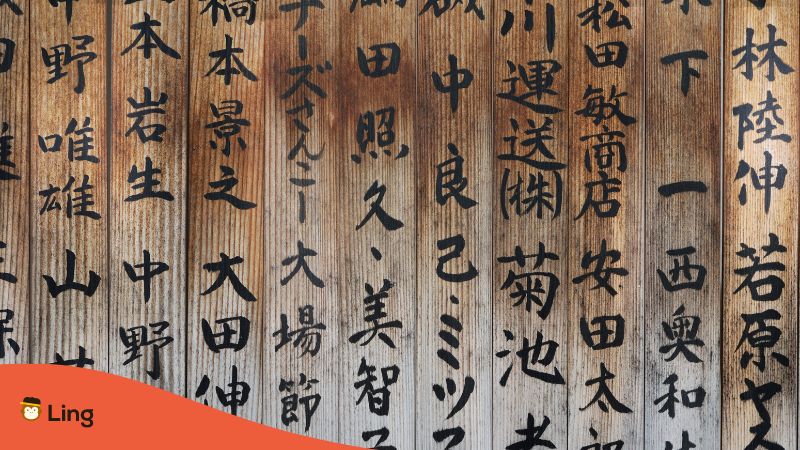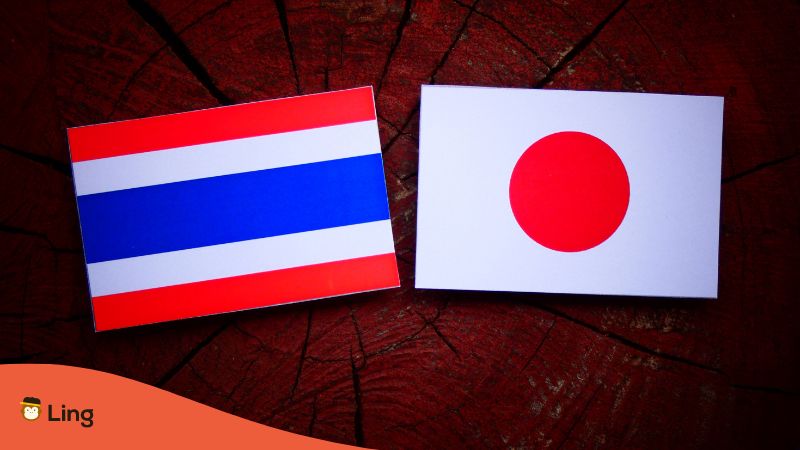Hey there, language enthusiasts! Have you ever noticed the surprising word similarities between Thai and Japanese? It’s like discovering a hidden bond between two fascinating cultures. In this article, we’ll dive into the intriguing world of Thai words similar to Japanese. From everyday vocabulary to essential phrases, we’ll explore how these two languages share common ground, despite being from different language families.
Whether you’re a fan of Thai culture or an avid follower of Japanese food, this linguistic connection is sure to pique your interest. So get ready to uncover the captivating parallels between native Thai and Japanese words, and perhaps gain a new appreciation for the interwoven tapestry of global languages. Let’s embark on this delightful journey together!

Thai & Japanese: Tracing The History
The historical relationship between the Thai and Japanese languages is a fascinating subject that unveils an intricate web of cultural and linguistic connections. Thai and Japanese belong to different language families: Thai is a member of the Tai-Kadai language family, and Japanese belongs to the Japonic language family. Even so, there have been various influences and interactions throughout history that have left their mark on both languages.
Indian & Chinese Influences
One notable period of influence was during the 6th to 9th centuries, when Buddhism spread from India to Southeast Asia. This brought about a significant influx of Sanskrit and Pali, which influenced the Thai language. Similarly, Buddhism reached Japan from China and Korea, introducing Chinese characters and vocabulary to the Japanese language. Consequently, Thai and Japanese bear traces of ancient Indian and Chinese influences.
During the Ayutthaya Kingdom (1351-1767) in Thailand, trade flourished, and the Thai people had contact with merchants from various regions, including Japan. This exchange led to the introduction of Japanese loanwords into the Thai language, particularly in areas related to trade and commerce. Similarly, Japanese merchants who visited Thailand picked up some Thai vocabulary and phrases.
Modernization
In the 19th and 20th centuries, when Japan embarked on a rapid modernization process, there was a surge of interest in Western knowledge and technology. Japanese scholars and intellectuals turned to Western languages, including English and German, for new concepts, grammar, and terminologies. At the same time, Thailand, then known as Siam, also underwent modernization and educational reforms. The Thai language began incorporating loanwords from English, French, and other European languages, indirectly influenced by Japan’s approach.
Despite these historical interactions, it is important to note that the structural and grammatical differences between Thai and Japanese remain prominent. While some words may exhibit similarities or loanword influences, the overall linguistic systems and syntax of the two languages are distinct.

List Of Thai Words Similar To Japanese
Japanese Borrowed Words
Japanese borrowed words have found their way into the Thai language, enriching its vocabulary and reflecting the cultural exchange between the two nations. These borrowed words, known as wasei-eigo or gairaigo, are often used in specific domains such as technology, food, fashion, and entertainment.
From everyday terms like ‘television’ (โทรทัศน์) and ‘buffet’ (บุฟเฟต์) to culinary delights like ‘sashimi’ (ซาชิมิ) and ‘ramen’ (ราเม็ง), Japanese loanwords have become an integral part of Thai communication. They not only serve as convenient descriptors but also reflect the influence of Japanese culture on Thai society. The use of Japanese-borrowed words in Thai showcases the ongoing linguistic and cultural connections between the two nations. Here is a list of Japanese loanwords commonly used in the Thai language:
- บุฟเฟต์ (Bu-fet) – Buffet
- ราเม็ง (Ra-meng) – Ramen
- ซูชิ (Su-chi) – Sushi
- โอตากุ (O-ta-ku) – Otaku (anime and manga fan)
- คาราโอเกะ (Ka-ra-o-ke) – Karaoke
- โอเดน (O-den) – Oden (Japanese hotpot)
- ซาชิมิ (Sa-chi-mi) – Sashimi
- โมโตโซบะ (Mo-to-so-ba) – Motsooba (Japanese buckwheat noodles)

Wrapping It Up
The relationship between the Thai and Japanese languages showcases a blend of historical influences, including religious and cultural exchanges, trade interactions, and modernization trends. These connections have resulted in occasionally shared vocabulary and loanword borrowings, revealing the intricate tapestry of linguistic and cultural exchanges between the two nations. Exploring these historical ties can provide valuable insights into the diverse linguistic landscape of the countries in Southeast Asia and East Asia.
Learn Thai With Ling
Looking to learn Thai? Look no further than Ling App! With Ling App, you can effortlessly dive into the world of Thai language learning, alongside 60 other global languages (including Japanese!). This innovative app offers a gamified interface that makes your learning experience engaging and enjoyable. Whether you’re a beginner or an advanced learner, Ling App has got you covered with its comprehensive curriculum.
The app’s quick and easy lessons are designed to fit into your busy schedule, allowing you to learn Thai at your own pace. From essential vocabulary to practical phrases, Ling App provides you with the tools you need to speak Thai like native speakers.
So, if you’re ready to embark on a language-learning adventure, download Ling App today and unlock the door to mastering Thai and a plethora of other languages. To download, simply visit the Google Play Store or Apple App Store!























